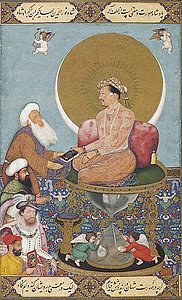Handling Diversity:
Medieval Europe and India in Comparison (13th - 18th Centuries)
The scrutiny of diversity – cultural, religious, ethnical, and political – is one of the main fields of contemporary research on European history. For the last ten years many aspects of these instances of diversity within Europe and at its frontiers have been studied by various scholars and research initiatives. As a result of this debate, the perception of medieval Europe has changed considerably, too. Medieval Europe is now considered as a region of heterogeneity, shaped by steady processes of integration and disintegration. There has been a second shift in medieval Europe’s perception; from a traditional point of view, Europe’s supposed singularity in the world has been taken for granted. In contrast, current works are criticizing this unique status as a global exception. Several comparative studies putting Europe in its Eurasian and global context have recently been published. However, these varying themes have never been combined into one research program that focuses on the multifaceted ways of handling diversity.
The planned project will combine the question of diversity with a comparative perspective. In the global context, the Indian subcontinent is an ideal region for comparison due to its interior variety in cultural, religious, ethnical, and political terms. Thus, like Europe, India was not a unified entity in the period from 13th to 18th centuries CE. The similarities between Europe and India are therefore obvious, but did the historical development in both regions follow the same path towards similar results? There are several essential questions, which have to be posed in order to tackle the issue: Was the perception, the tackling, and the result of cultural contact realized in the same way? Was handling diversity in India similar to handling diversity in Europe? Moreover, what can we learn about the two world regions by comparing the specific forms of handling diversity? Are there European or Indian patterns of dealing with heterogeneity? There is one key question of contemporary global history strongly related to these questions, namely how the transition of different world regions towards Early Modernity took place.
Project Management: Univ. Prof. Dr. Thomas Ertl
Project Contribution: Dr. Gijs Kruijtzer
Project Duration: May 2012 - April 2015
Project Funding: Vienna Science and Technology Fund (WWTF)





